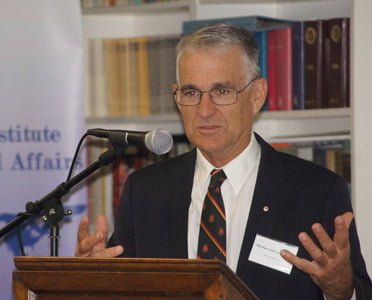
Can we avoid a global nutrition catastrophe?
Agricultural scientists have for long highlighted the plight of the under-nourished. Whilst the number of people in this category globally has been falling since the beginning of the century, they still number over 815 million and recently the figure has started to climb again.
However, in an era of cars, smart gadgets and mechanisation, the number of people globally who are overweight and obese has reached 2 billion. These people are distributed in both developed and developing countries and represent a frightening prospect for health professionals with respect to increased rates of diabetes and other diseases associated with excess weight.
Currently, a Parliamentary Committee is reviewing the effectiveness and outcomes of Australian aid. According to the World Bank, agricultural aid to poorer countries is undoubtedly a good way of increasing prosperity both at farmer level, but also in terms of raising a country’s GDP. However, we argue here that a more integrated approach to aid across the agriculture-food-diet-health spectrum is needed if aid is to be really effective.
If we look to the causes of being overweight or obese, clearly increasing wealth and access to cheaper, processed, high calorific foods along with lack of exercise are implicated. For agricultural scientists involved in international development, the mantra for many years has been predominantly to increase yields to tackle a perceived deficit in food production. This predicated the Green Revolution of the 1950s-70s which undoubtedly prevented up to 2 billion people starving.
Today, however, enough food is grown globally to feed everyone. The 815 million people under-nourished and instances of food riots, such as occurred in some countries during the 2007-08 food crisis, are really symptoms of a lack of access to food due to inequality and inadequate distribution systems that drove prices up.
Indeed, continued striving for greater yield has put extra pressure on global land and water resources, ecosystem services and the environment in general, not to mention the fact that agriculture is already a large and growing greenhouse gas emitter.
Whilst, with a growing global population forecast to reach 9.7 billion in 2050, we do need to maintain work on food security with an emphasis on systems’ sustainability, it is evident that we also need to direct more resources into nutritional security. This should be with a perspective of improving nutrition of both the under-and over-nourished.
As the chairman and chief executive of a small non-government organisation, The Crawford Fund, focused on ways in which Australia can help tackle food security issues in developing countries, we have, along with the Australian Centre for International Agricultural Research, been formulating new strategies that will help Australia take a leadership role in the Indo-Pacific region in improving understanding of the relationship between agriculture, food, nutrition and health.
We see a lot both at home and overseas that is currently wrong in agriculture and that needs significant attention in terms of research and development through to application in the field.
Consequently, we have to promote greater access for women to training programs, as well as trying to ensure gender issues are included in determining pathways to successful implementation of change and innovation.
Women also have the most significant impact on a family’s dietary intake and helping them understand better the need for good nutrition will have long term health benefits.
Similarly, governance and institutional support systems in many countries are not fine-tuned enough to promote sustainable agricultural production systems, nor healthier diets. Far too often monocultures persist and there is a lack of diversity of crops and thus foods.
We see a major need to improve the understanding of these issues. Our aid programs need to demonstrate the positive outcomes of better policy, regulation and institutional support structures on production, food distribution and processing systems. Capacity building of early to mid-career researchers and managers as well as senior policy makers is highly important in this regard.
Both in Australia and overseas, another major gap is the poor way agriculture is promoted to the young as a career choice. We have to do better in this regard and attract some of the brightest into careers along the entire food value chain.
We have now attracted over 600 members into our RAID Program (Researchers in Agriculture for International Development), but there is much more to be done at high school level. These young scientists are the next generation who will demonstrate Australian agricultural know-how overseas.
We are also actively encouraging and supporting senior researchers to mentor overseas younger counterparts and Australian volunteers across the spectrum of agriculture, forestry and fisheries.
Focus on gender equity, governance and agricultural careers and training can go so far both here and abroad. However, as should be clear to all, the issues of nutrition, diets and health are complex and cross disciplinary.
We think that new coalitions of agricultural scientists, dietary specialists, and health professionals will be needed to tackle the growing problem of over nutrition. Furthermore, companies involved in food processing and retailing need to work with the above specialists and further engage in provision of foods fit for healthy lives. Globally and regionally we need new goals that encourage healthy eating for a healthy life and healthy planet.
- John Anderson is a former Deputy Prime Minister of Australia and chairman of the Crawford Fund
- Colin Chartres has worked in natural resource management and agriculture for over 40 years and is chief executive of the Crawford Fund.
Originally published in farmonline.com
Original Article






